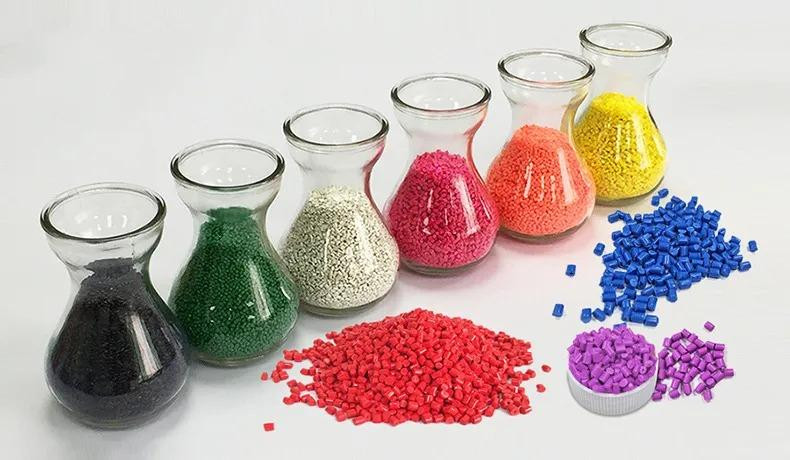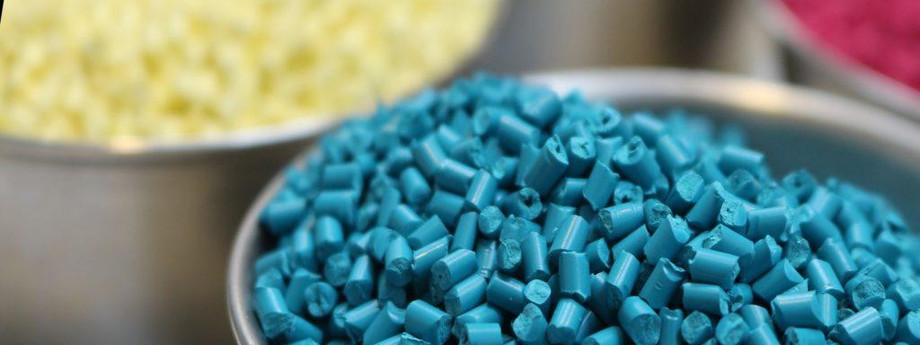The India Masterbatch Market is witnessing steady momentum as it grows with a projected CAGR of 4.15% through 2030. Driven by rising industrialization, government initiatives, and evolving technological demands, this sector is becoming an integral pillar of India's polymer and plastic processing industry. According to TechSci Research, the market stood at USD 364.69 million in 2024 and is poised to see consistent expansion due to increasing applications across packaging, agriculture, construction, automotive, and more.
As global markets lean toward sustainability and functional material innovation, India's domestic demand for high-performance additives is accelerating. From eco-friendly packaging solutions to advanced engineering plastics, masterbatches are playing a critical role in transforming material science for Indian manufacturers.

Industry Key Features
1. Smart City and Infrastructure Projects Creating Demand Surge
One of the most influential catalysts for the India Masterbatch Market is the country's ambitious Smart City Mission, which aims to develop urban ecosystems with enhanced sustainability, digital integration, and intelligent infrastructure. These projects, involving extensive construction and smart utilities, are generating a strong uptick in demand for specialized masterbatches used in pipes, cables, roofing sheets, and aesthetic panels.
Masterbatches with UV resistance, flame retardancy, and color customization are particularly in demand for applications in smart urban development. These materials help enhance product life, ensure regulatory compliance, and support the overall sustainability goals of the Smart Cities initiative.
2. Government Schemes Promoting Domestic Manufacturing
Other government-led efforts such as Atmanirbhar Bharat and Make in India have invigorated local production ecosystems. These initiatives are fostering demand for plastic components and packaging materials in sectors like agriculture, consumer goods, and infrastructure, thereby accelerating the need for masterbatches that improve polymer performance.
The Pradhan Mantri Krishi Sinchayee Yojana (PMKSY) has also indirectly boosted masterbatch demand in agriculture. The usage of masterbatches in irrigation systems, greenhouse films, and silage bags is increasing as farmers transition to efficient farming methods.
3. Segment Insights: Blow Molding Dominance
Among application segments, Blow Molding has emerged as the dominant process. India's packaging sector is evolving rapidly due to increasing consumption of pharmaceuticals, FMCG, and bottled beverages. Blow molding offers cost-effective production of containers, bottles, and jars that require specific functional masterbatches such as anti-static, slip, anti-block, and color additives.
Manufacturers are leveraging color masterbatch solutions for brand differentiation, and using additive masterbatches to meet shelf life, durability, and barrier property requirements in packaging applications.
4. Regional Dynamics: North India Rising
Geographically, North India has emerged as the fastest-growing regional segment for masterbatch consumption. States like Haryana, Punjab, and Uttar Pradesh are experiencing accelerated growth in manufacturing and packaging industries, along with infrastructure developments. The availability of skilled labor, strategic connectivity to ports, and industrial clusters is making this region a masterbatch manufacturing and consumption hotspot.
Advanced plastics applications in construction (e.g., window frames, piping, cladding) and agriculture (e.g., mulch films, drip irrigation components) have driven region-specific demand. These applications demand black masterbatches, additive blends, and custom colorants with enhanced thermal and UV stability.
Emerging Trends in India Masterbatch Market
Sustainability Through Biodegradable and Recycled Polymers
Environmental pressures and sustainability regulations are shifting market priorities. Companies are increasingly investing in biodegradable masterbatches compatible with bioplastics such as PLA, PBS, and PHA. The need for compostable and environmentally friendly alternatives is gaining traction in packaging and agriculture, sectors with high plastic usage.
In addition, recycled polymer-compatible masterbatches are witnessing rising adoption. These enable consistent coloring and additive performance even in post-consumer recycled materials, aiding circular economy goals without compromising product quality.
Nanotechnology Integration
Nanotechnology is a breakthrough trend influencing the India Masterbatch Market. Masterbatches containing nano-clays and nano-additives offer improved mechanical strength, gas barrier properties, and thermal stability. The food and beverage packaging sector, in particular, is adopting these solutions to extend shelf life and reduce contamination risks.
In automotive and electronics, nanotechnology-based masterbatches offer anti-scratch, electromagnetic shielding, and flame-retardant properties that cater to stringent performance standards.
Digital Color Matching and Customization
With increasing demand for customized packaging and branding, digital color matching systems are being deployed by major masterbatch producers. These systems reduce lead time in color development and ensure batch-to-batch consistency for branding-critical applications like FMCG and retail packaging.
This shift towards mass customization is enabled through AI-enabled prediction models and pigment dispersion technologies that allow seamless development of niche color masterbatches.
Future Outlook
The India Masterbatch Market is expected to maintain a healthy growth trajectory over the next decade, with innovations in polymer science, expansion of application sectors, and alignment with sustainability goals being the primary growth pillars.
Technological collaboration between polymer manufacturers, packaging companies, and R&D labs will fuel the development of next-gen masterbatches—particularly those designed for bio-based and recycled resins.
Furthermore, government policies focused on plastic waste management and extended producer responsibility (EPR) are likely to shape future product portfolios. Companies offering sustainable, compliant, and performance-enhancing masterbatches will gain a competitive edge in this transforming market.

10 Benefit Points of Research Report and Competitive Analysis
-
-
Strategic Insights on Growth Drivers
Gain clear understanding of how infrastructure, agriculture, and FMCG trends are driving masterbatch consumption in India. -
Comprehensive Market Segmentation
Detailed analysis by type, application, region, and competition to support strategic planning. -
Competitor Benchmarking
Understand how major players like Alok Masterbatches, Clariant India, and Poddar Pigments are positioning themselves in the market. -
Emerging Technology Tracking
In-depth coverage of technologies like nanotechnology, biodegradable materials, and AI-based color matching. -
Regional Opportunity Mapping
Focused insight into high-growth regions like North India and opportunities in Tier-II and Tier-III cities. -
Sustainability Readiness Index
Evaluates how market participants are aligning with sustainability trends, including recyclable and bio-based masterbatch demand. -
Pricing and Raw Material Analysis
Covers impact of global polymer prices and local sourcing trends on masterbatch production costs. -
Regulatory Impact Assessment
Understand how India’s evolving plastic usage norms and environmental guidelines are shaping product innovation. -
Consumer Behavior and Application Trends
Insights into packaging, agriculture, construction, and consumer durables driving masterbatch formulations. -
Forecasts and Scenario Analysis (2024–2030)
Provides reliable growth projections, scenario planning tools, and investment guidance tailored for business decision-makers.
-
Competitive Landscape
Key players operating in the India Masterbatch Market include:
-
-
Alok MasterBatches Pvt Ltd
-
Poddar Pigments Ltd
-
Plastiblends India Ltd
-
Clariant India Pvt Ltd
-
Cabot India Limited
-
These companies are continuously investing in R&D, expanding production capacities, and launching eco-conscious product lines to remain competitive.
Their core strategies involve partnerships with polymer processors, backward integration of pigment sourcing, and global technology transfers. The race is toward producing masterbatches that balance performance, price, and sustainability.
Conclusion
The India Masterbatch Market is transitioning from being a commoditized segment to an innovation-driven sector aligned with global material trends. As industries from automotive to agriculture embrace next-gen plastics, masterbatches will play a central role in enhancing functionality, compliance, and environmental performance.
Stakeholders who align with circular economy practices, invest in digital and nano-technologies, and strategically expand in high-growth regions will shape the future of this sector.
For businesses, now is the opportune time to explore, invest, and innovate within India’s evolving masterbatch ecosystem.
Contact Us –
TechSci Research LLC
420 Lexington Avenue, Suite 300,
New York, United States – 10170
M: +1 332 258 6602
Email: [email protected]
Website: www.techsciresearch.com
Source: TechSci News - India Masterbatch Market
FAQs on India Masterbatch Market
Q1. What is driving the growth of the India Masterbatch Market?
The India Masterbatch Market is primarily driven by government initiatives like the Smart City Mission and Atmanirbhar Bharat, which have created strong demand for construction masterbatches and plastic additives across infrastructure and urban development projects.
Q2. Which application segment dominates the India Masterbatch Market?
Blow molding leads among all applications due to its cost-effective usage in manufacturing bottles, containers, and packaging materials. This has significantly increased the consumption of masterbatches in packaging and FMCG sectors.
Q3. How is sustainability influencing the market?
Growing awareness around environmental safety has led to the adoption of biodegradable masterbatches and recycled polymer solutions. These innovations are helping the India Masterbatch Market align with global sustainability goals.
Q4. What role does nanotechnology play in this market?
Nanotechnology-enhanced masterbatches are being used to improve barrier properties, strength, and heat resistance, especially in the packaging and automotive industries, contributing to the advanced growth of the India Masterbatch Market.
Q5. Why is North India a growing region for masterbatches?
North India, especially states like Punjab and Haryana, is witnessing rising demand due to expanding industries in plastics, agriculture, and real estate. This has increased regional adoption of color and additive masterbatches.